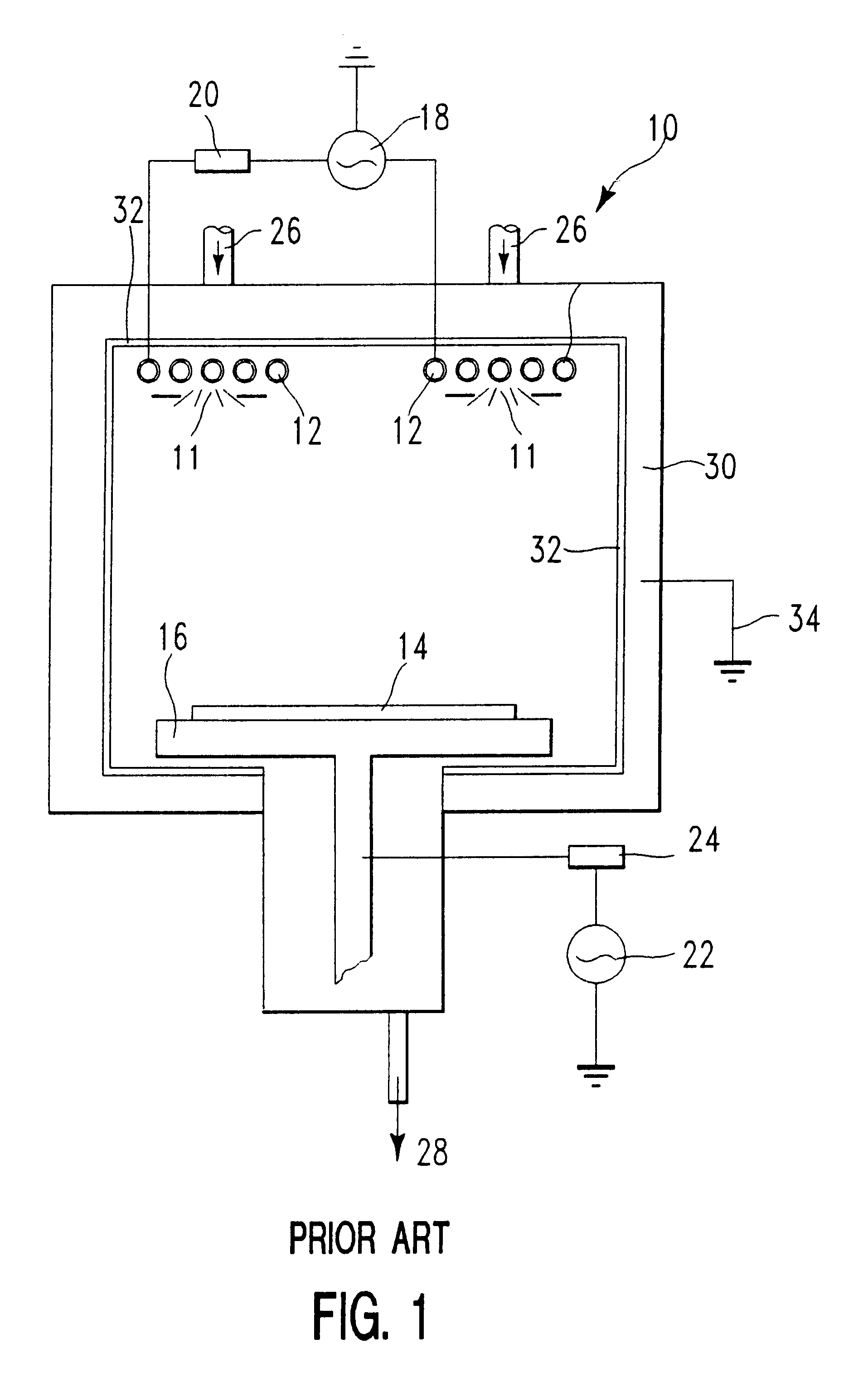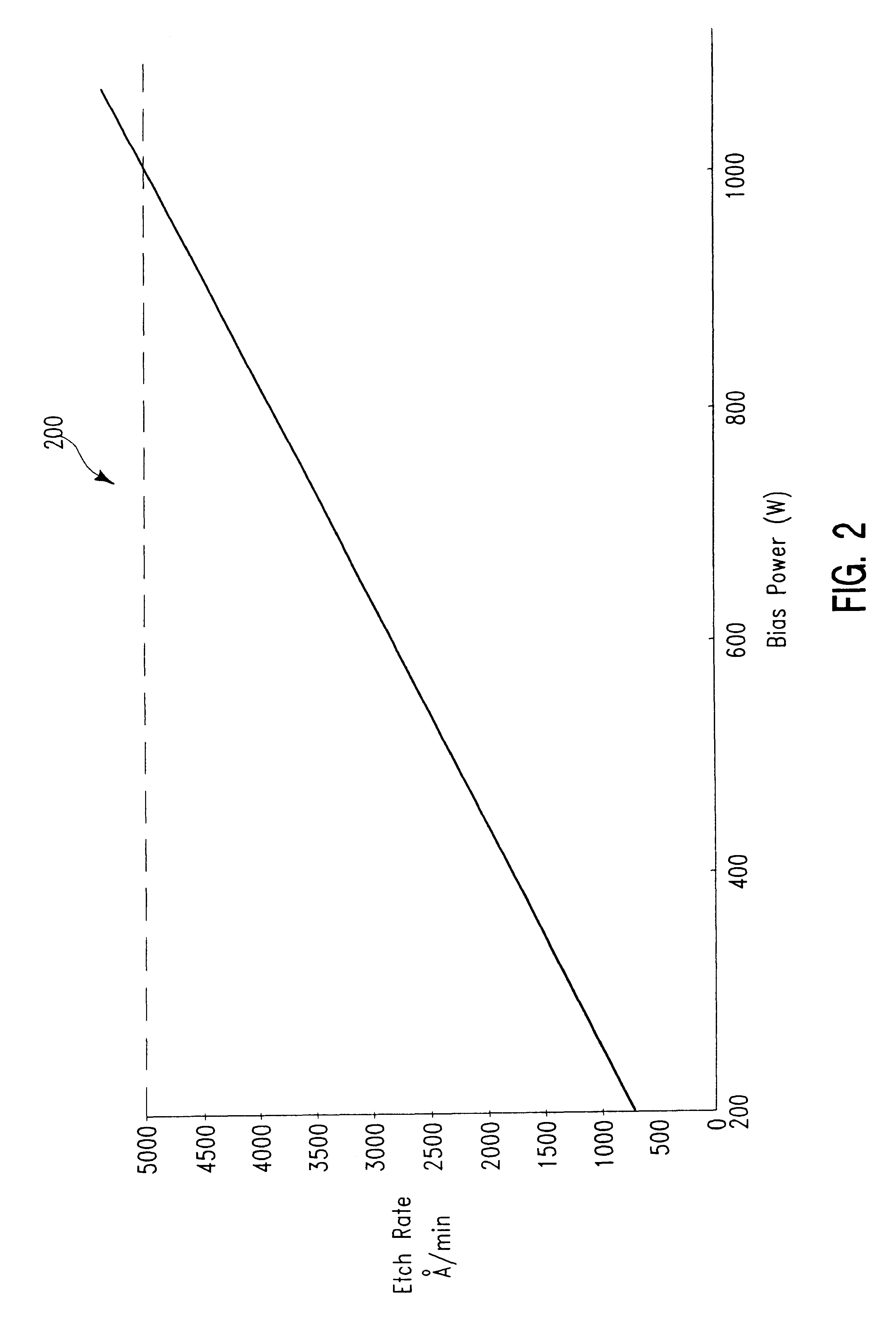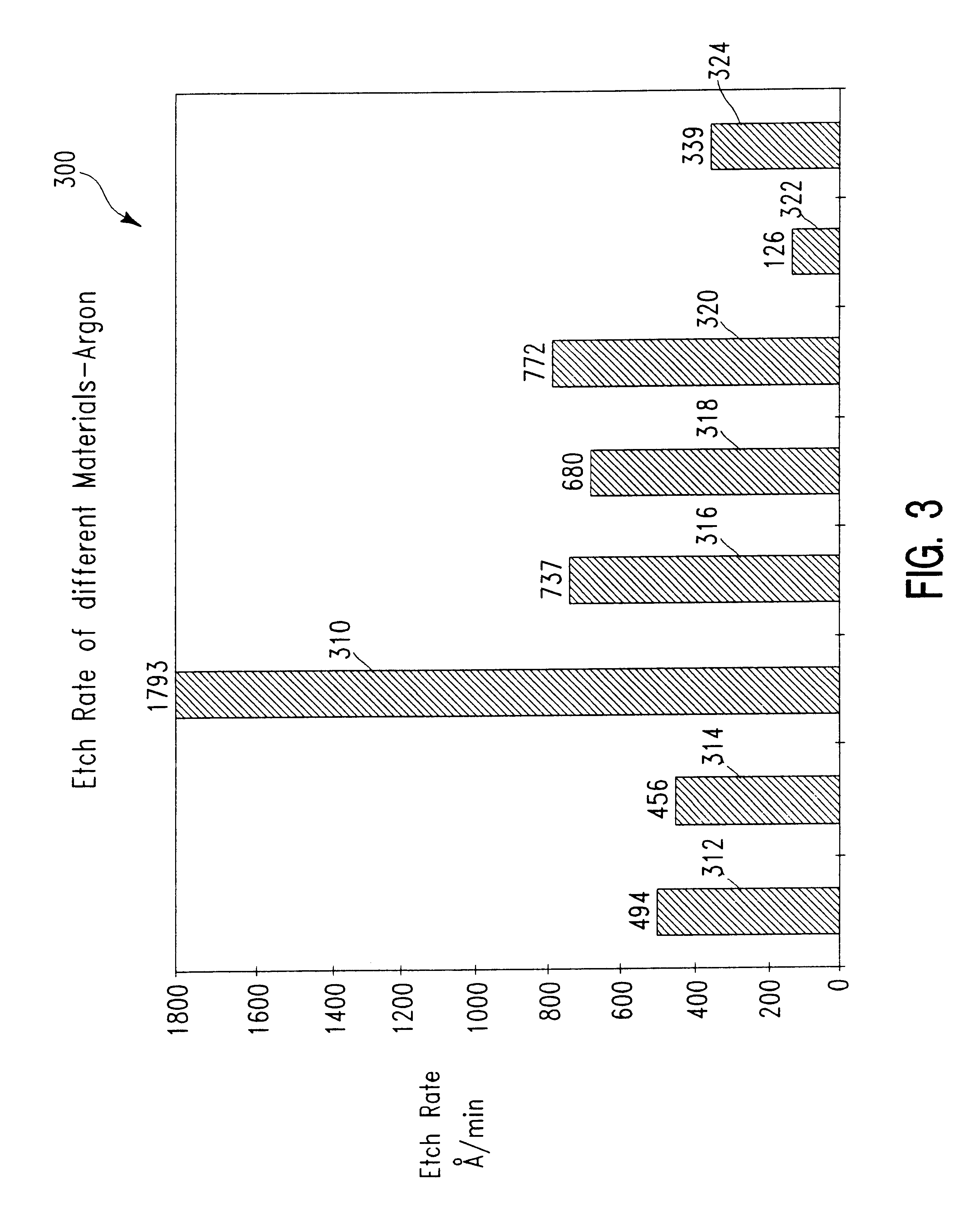Etched patterned copper features free from etch process residue
a technology of etching process and copper, which is applied in the direction of semiconductor/solid-state device details, manufacturing tools, transportation and packaging, etc., can solve the problems of difficult etching of copper, low etching efficiency, and high difficulty in device patterning
- Summary
- Abstract
- Description
- Claims
- Application Information
AI Technical Summary
Problems solved by technology
Method used
Image
Examples
example two
Selectivity
FIG. 3 shows a block diagram 300 of the etch rate attainable for a copper film patterned in the manner described above, with comparative etch rates for a number of different materials when the feed gas to the etch chamber is solely argon. The etch variables were as specified for Example One, with the bias power applied to the substrate support platen fixed at 400 W. The number at the top of an individual block is the etch rate in .ANG. / min as measured. The block identified as "310" represents copper; block "312" represents aluminum; block "314" represents silicon dioxide; block "316" represents tantalum; block "318" represents tantalum nitride; block "320" represents tungsten, block"322" represents titanium nitride, and block "324" represents i-line photoresist (available from Shipley Co.).
As is evident from block diagram 300, there is a marked difference in etch rate between copper and many of the compounds and elements which are likely to be present in layers adjacent t...
example three
Enhanced Physical Bombardment Using Soley Physical Techniques
Although physical ion bombardment provides satisfactory etch rates for copper and the selectivity needed with regard to other fill materials typically used in semiconductor fabrication, there is typically a slight slope in an etched line profile, with a broadening toward the base of the line. The amount of slope does not provide a problem for feature sizes of about 0.5 .mu.m or larger. However, for feature sizes of about 0.35 .mu.m or larger, there is a need to assist the physical ion bombardment techniques so that copper atoms dislodged from the surface of the forming line do not reattach at another location upon the line surface. When there is not a clear path for the copper atoms to the upper surface of the copper film being pattern etched, these atoms may reattach to the line surface before the vacuum applied to the etch chamber can carry them away from the substrate surface. As the line is forming, the distance the co...
example four
Enhanced Physical Bombardment Combined with a Chemically Reactive Species
An alternative method for improving a line profile, (alterative to enhanced physical bombardment which is solely physical in nature) is the use of a combination of enhanced physical bombardment with a chemically reactive species. The chemically reactive species is used at a concentration greatly reduced over that previously known in the art and works a synergistic effect with the additional energy supplied by the enhanced physical bombardment, as previously described.
The use of a chemically reactive etchant provides a degree of anisotropic etching of the sidewall of the line. The anisotropic etching helps in the removal of physical ion bombarded copper atoms which tend to redeposit / reattach upon the etched profile as they exit the copper surface. A portion of such copper atoms exit at an angle, causing such redeposition. At times these copper atoms stick to the wall of the photoresist or hard mask and etched fe...
PUM
| Property | Measurement | Unit |
|---|---|---|
| feature sizes | aaaaa | aaaaa |
| sizes | aaaaa | aaaaa |
| temperatures | aaaaa | aaaaa |
Abstract
Description
Claims
Application Information
 Login to View More
Login to View More - R&D
- Intellectual Property
- Life Sciences
- Materials
- Tech Scout
- Unparalleled Data Quality
- Higher Quality Content
- 60% Fewer Hallucinations
Browse by: Latest US Patents, China's latest patents, Technical Efficacy Thesaurus, Application Domain, Technology Topic, Popular Technical Reports.
© 2025 PatSnap. All rights reserved.Legal|Privacy policy|Modern Slavery Act Transparency Statement|Sitemap|About US| Contact US: help@patsnap.com



